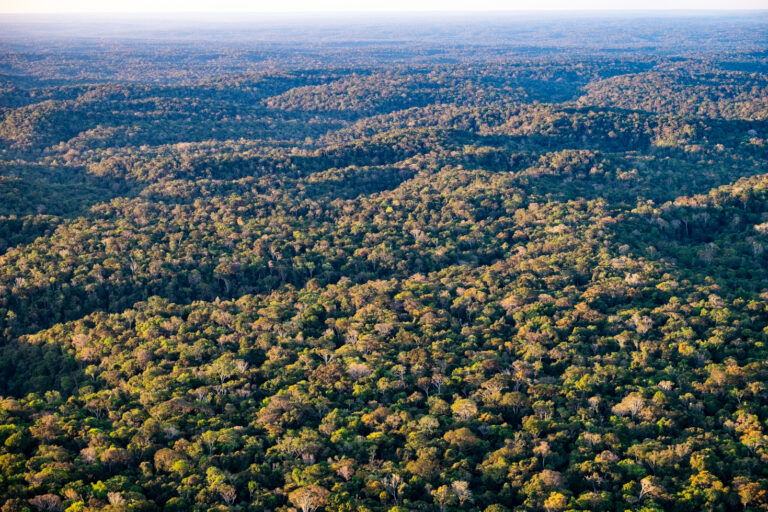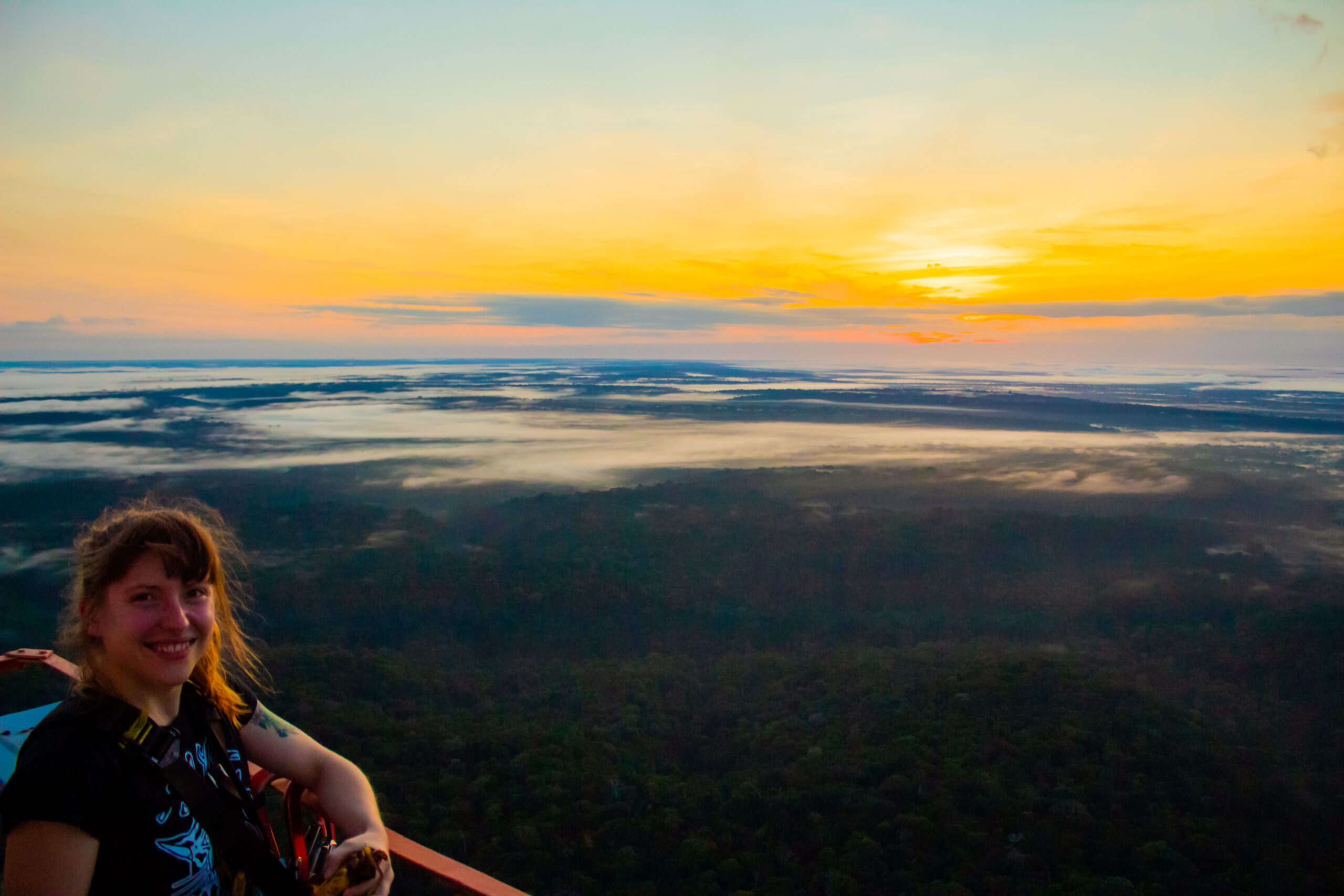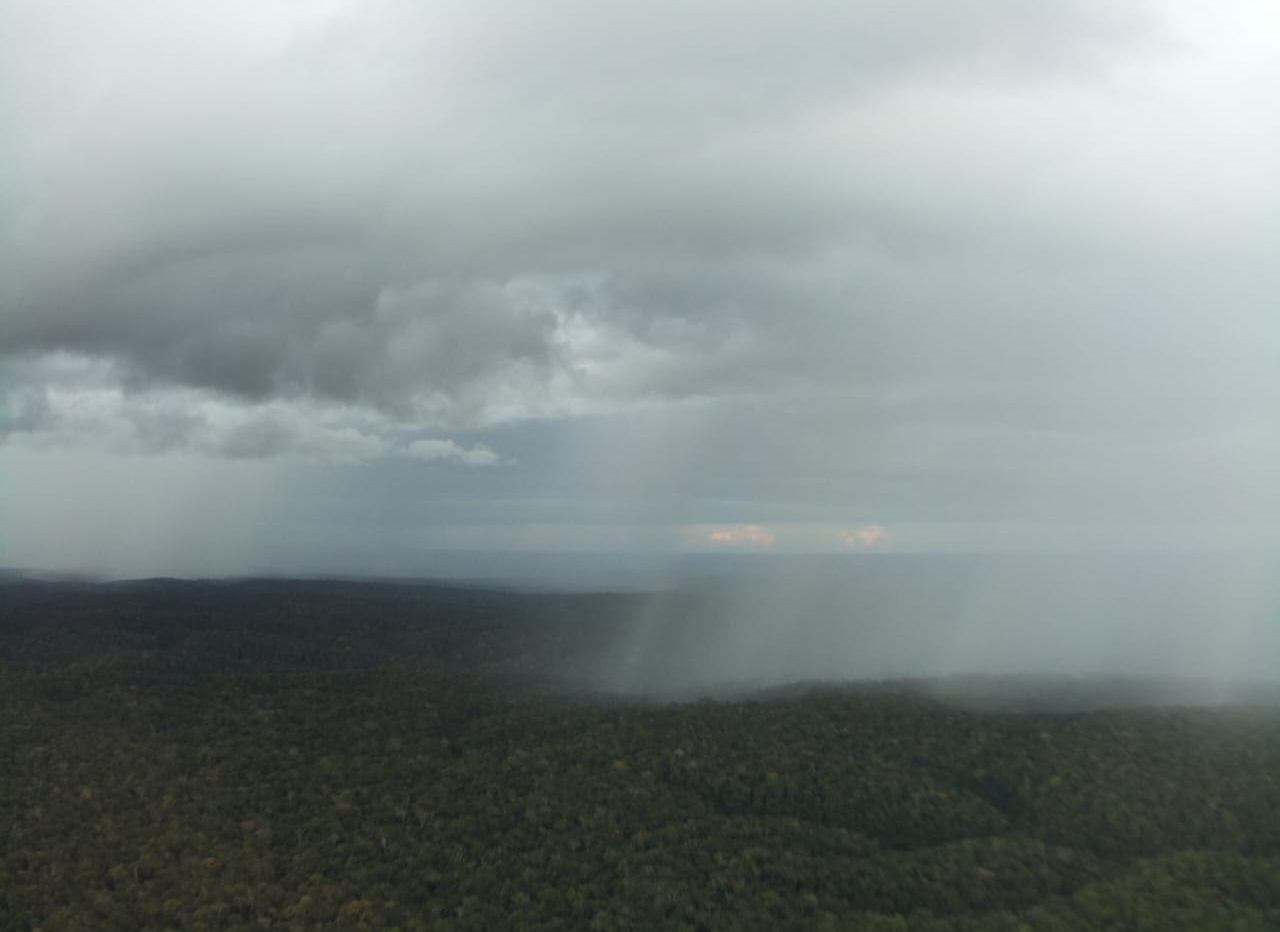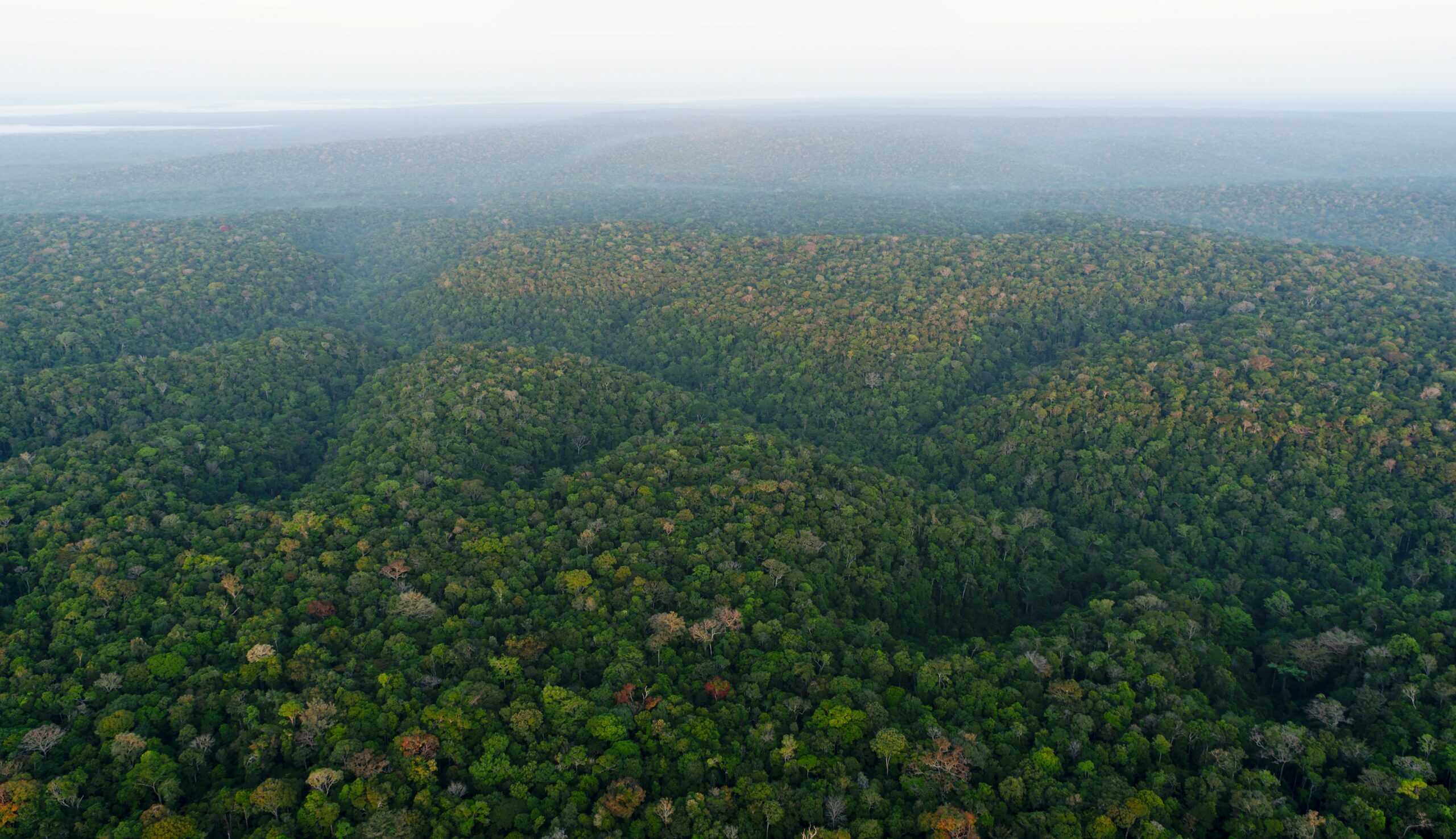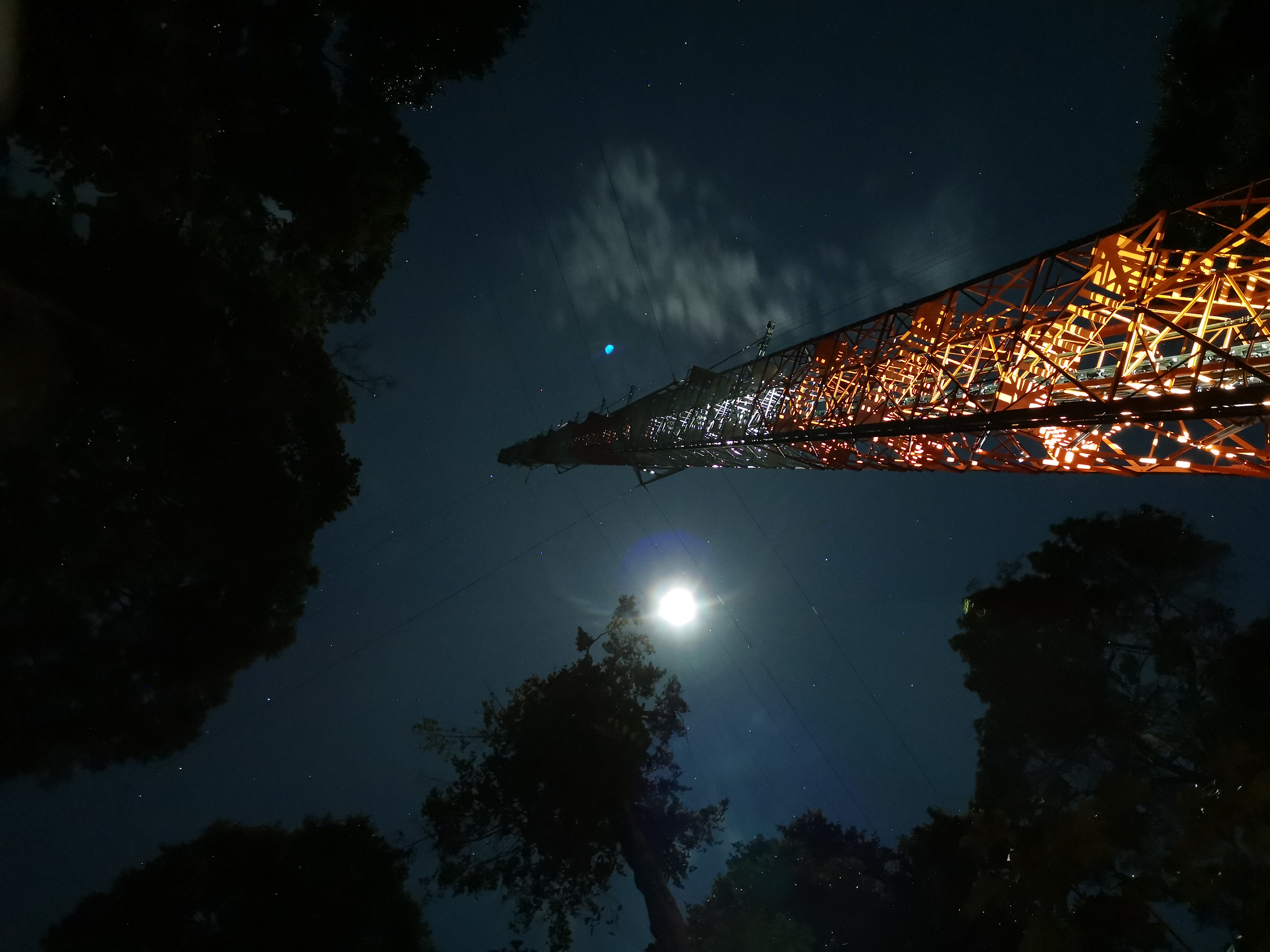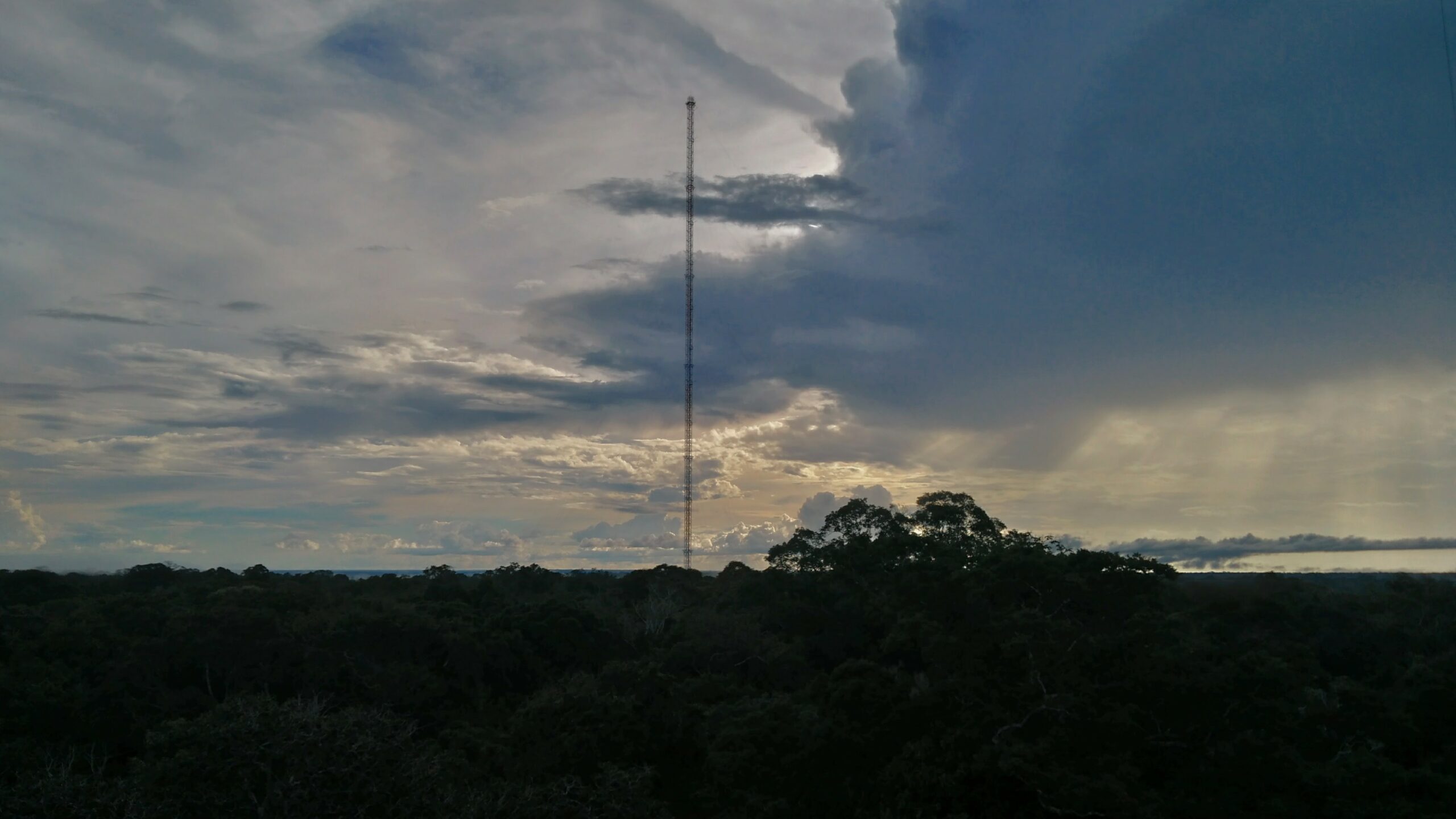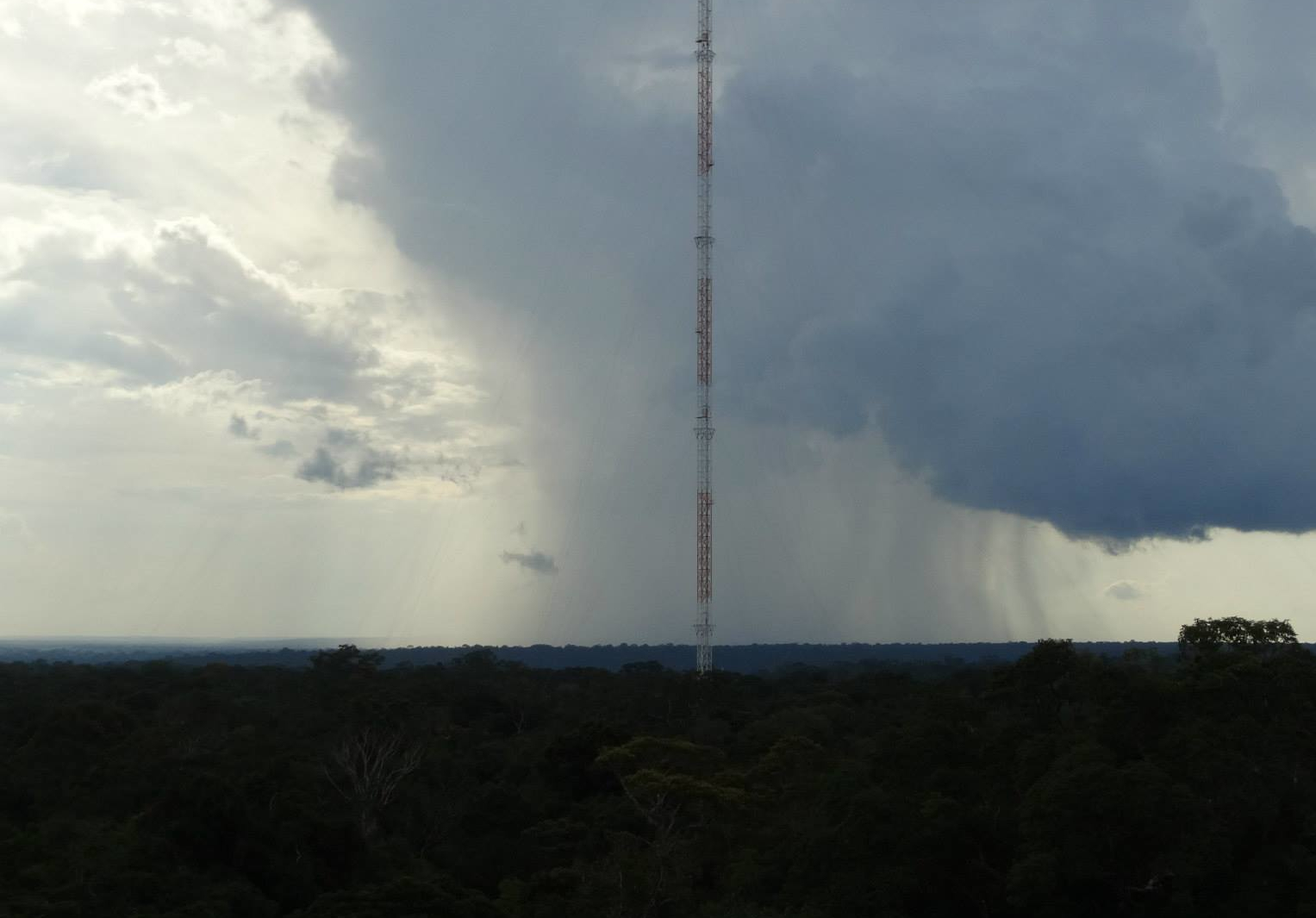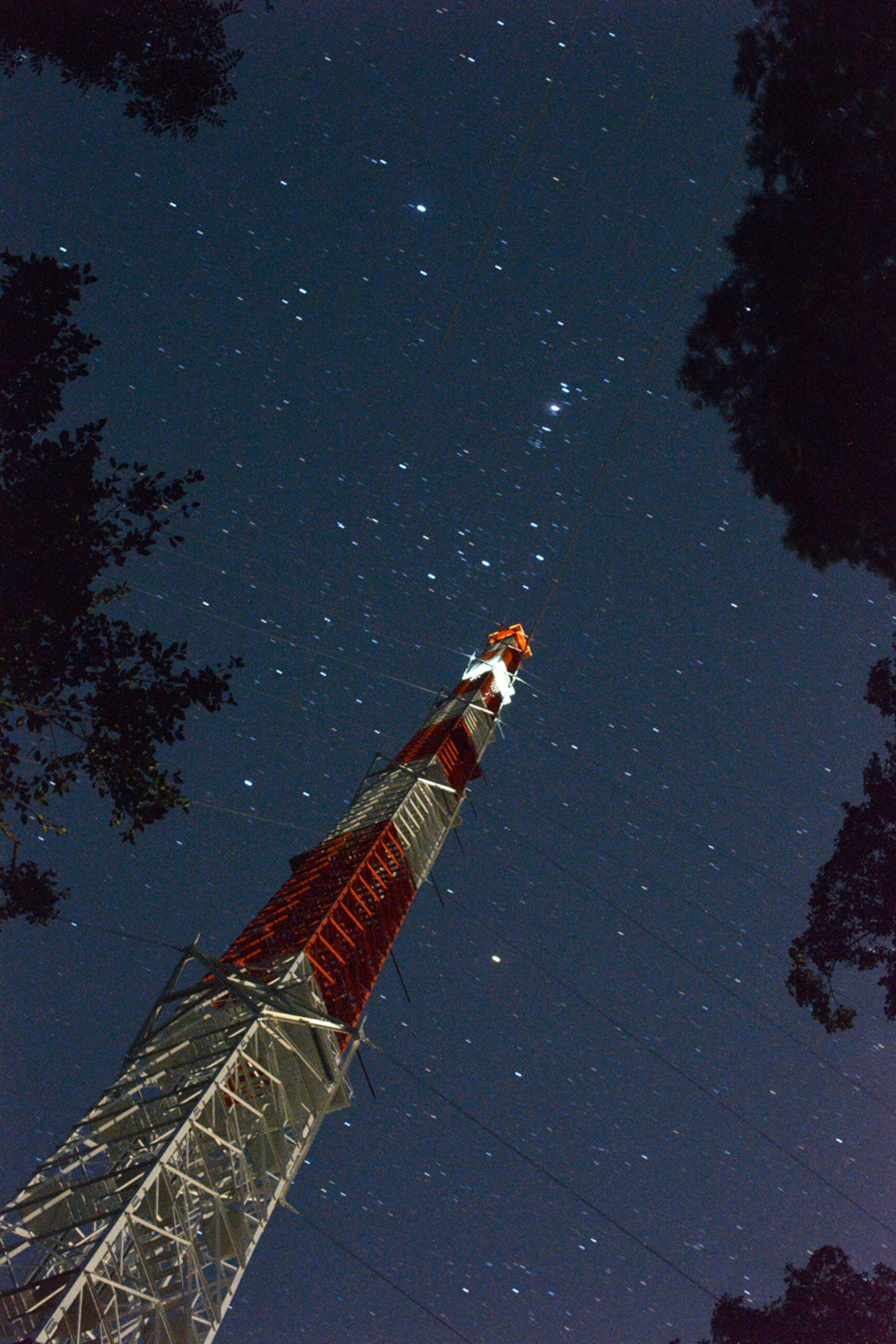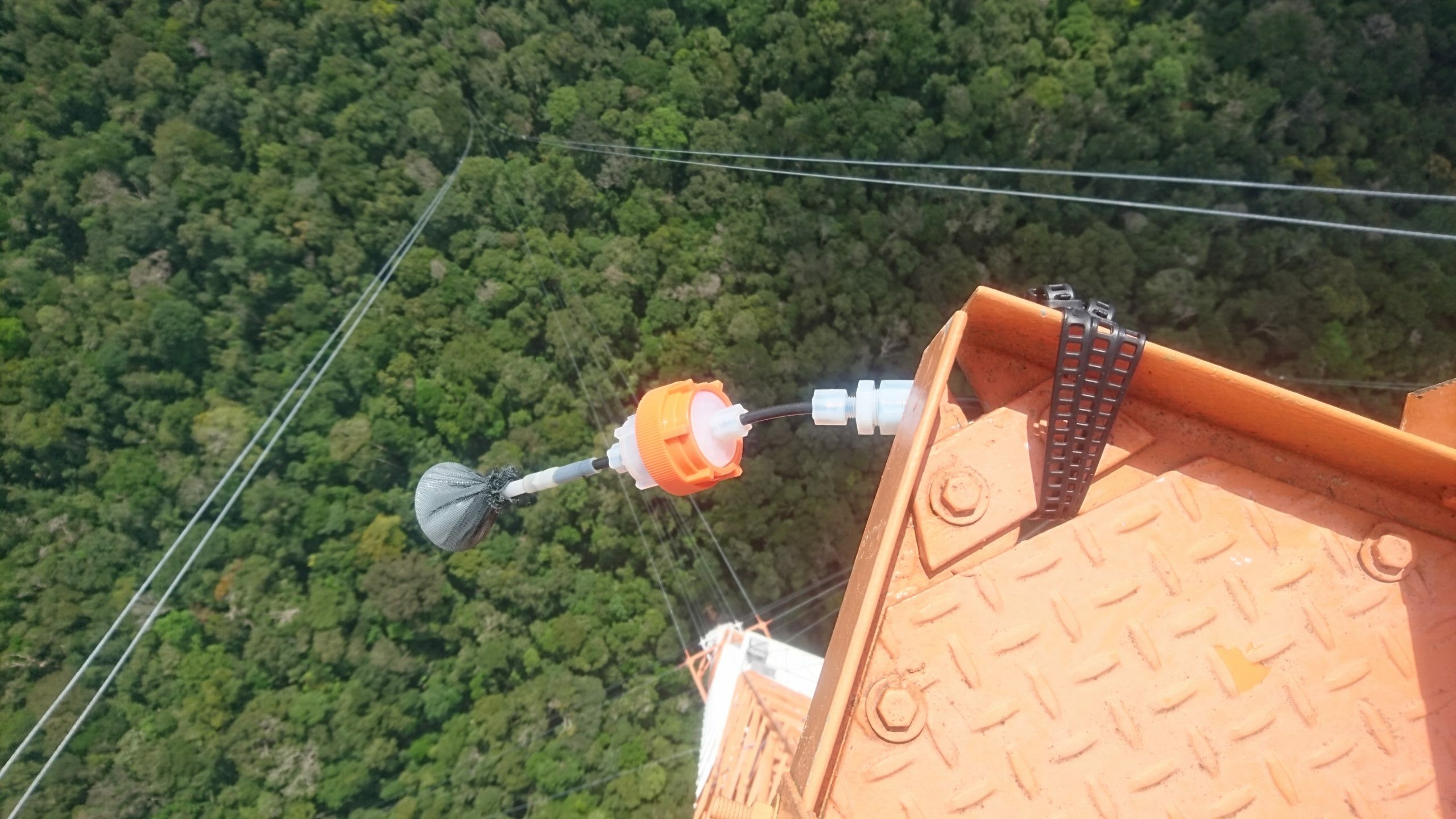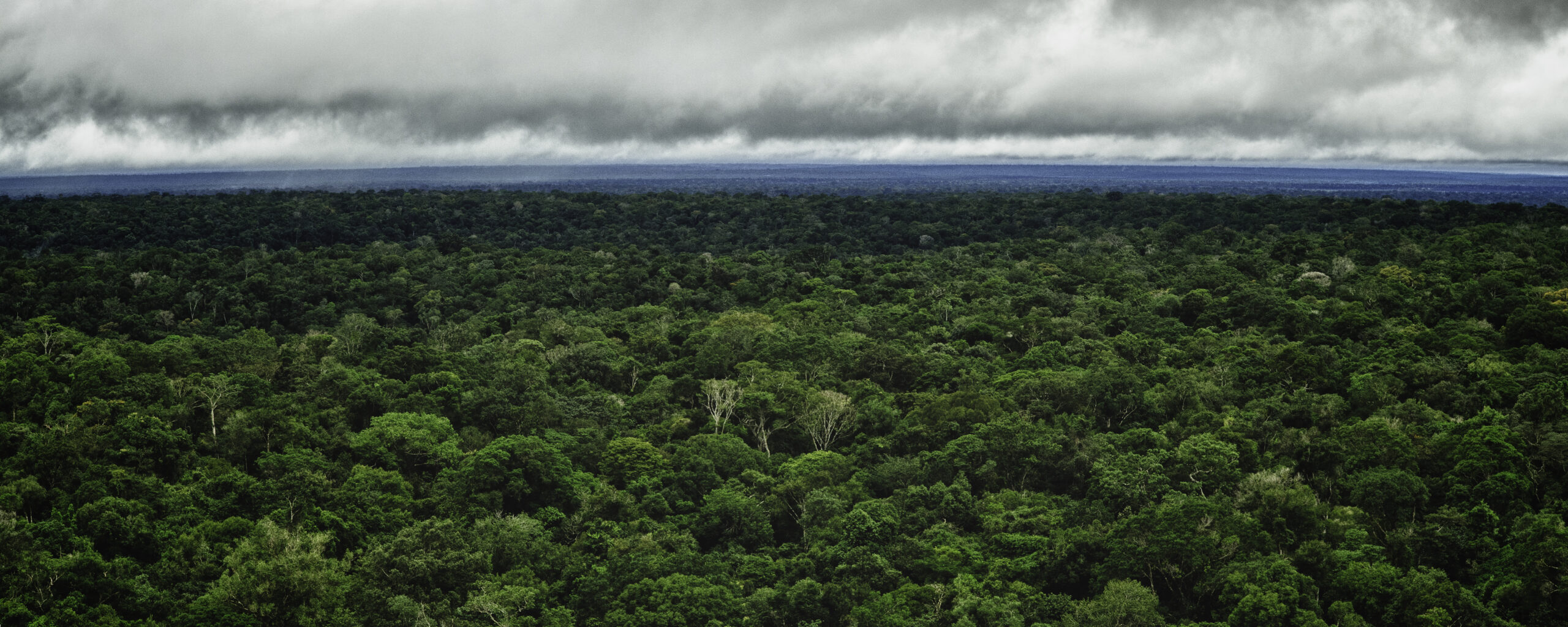Atmospheric turbulence
Whirling wind motions called turbulence commonly occur in the lowest 100 m of the atmosphere. Here, they play an important role in transporting energy, gases, and particles away from and toward the land surface. Accordingly, these exchanges are crucial for the interaction between the atmosphere and the biosphere. This includes processes such as:
- transport of latent heat (energy)
- transport of local methane emissions (gases)
- rise of forest-produced pollen into the atmosphere, where they might function as condensation nuclei for cloud formation (particles)
Quantifying and predicting the energy available to promote this mixing is therefore critical to better understand how strong these interactions are.
The role of topography
And this is exactly what Marcelo Chamecki and his co-authors are working on. Marcelo Chamecki, Cleo Quaresma Dias‐Júnior, and several researchers of the ATTO project published two papers on the structure of atmospheric turbulence back in 2018 and 2019 (we wrote about this). They found several unexpected results. So now, they and their team followed up on those first results with more details. Specifically, they looked at how gentle topography covered by dense forests affects turbulence.
“Gentle topography” in this case means about 50-70 meters height difference between the highest and lowest points in the area. This terrain is covered by dense rainforest with a canopy height of 35 meters on average.
To approach this, they used daytime observations from two field campaigns in central Amazonia, as well as computer turbulence simulations. The field studies are the GoAmazon campaign and data from ATTO.
And indeed, the scientists found that even the gentle topography underneath the Amazon forest strongly impacts the turbulence in those lowest 100 meters. This is really valuable information. Thus far, studies in the region have interpreted their observations based on the simplified assumption of wind flow over flat topography. If future studies take this effect on turbulence into consideration, they will likely be able to improve existing estimates of energy, gas and pollen fluxes mentioned in the opening.
Chamecki et al. recently published the study “Effects of Vegetation and Topography on the Boundary Layer Structure above the Amazon Forest” Open Access in the Journal of the Atmospheric Science.
Similar articles
Direct measurements of OH radicals are rare and difficult to achieve. However, since they react with BVOCs, Ringsdorf et al. inferred them from isoprene measurements at ATTO. To do so, they applied a technique called ‘Dynamical Time Warping’ from the field of speech recognition. Akima Ringsdorf et al. published the study “Inferring the diurnal variability of OH radical concentrations over the Amazon from BVOC measurements” Open Access in Nature Scientific Reports.
In a new study, Anne Mendonça, Cléo Quaresma, Daniel Marra and their co-authors analyzed different turbulence regimes at the ZF2 site as part of the ATTO-INVENTA project. They also investigated how turbulence is connected to the occurrence of downdrafts and extreme wind gusts, that might lead to tree mortality.
In a new study, Luca Mortarini and his colleagues introduce a novel approach to the study of the roughness sublayer, using a cospectral budget model. Its originality lies in not considering the mixing layer analogy to parameterize the turbulence statistics. In addition, it relates them to the different scales of the wind velocity spectrum without making any assumption on the property of the flow.
Eiky Moraes, Cléo Dias-Júnior and their colleagues wanted to find out if the local topography at the ATTO influenced the atmospheric movements. In particular, they were interested in the effect that topography has on the formation of gravity waves. Comparing two simulations, one with and one without topography, revealed some important differences in the dynamics and chemistry of the atmosphere.
Only when the air inside of the forest canopy mixes with the air above can there be exchange. The physical movement of the air, its turbulence, determine how well these two layers of air, the one inside the forest canopy and the one above, mix. Daniela Cava, Luca Mortarini, Cleo Quaresma and their colleagues set out to address some of these questions with two new studies that they conducted at ATTO. They wanted to define the different regimes of atmospheric turbulence or stability (Part 1) and describe the spatial and temporal scales of turbulent structures (Part 2).
In a new study, Marco A. Franco and his colleagues analyzed when and under what conditions aerosols grow to a size relevant for cloud formation. Such growth events are relatively rare in the Amazon rainforest and follow and pronounced diurnal and seasonal cycles. The majority take place during the daytime, and during the wet season. But the team also discovered a few remarkable exceptions.
It is long known that aerosols, directly and indirectly, affect clouds and precipitation. But very few studies have focused on the opposite: the question of how clouds modify aerosol properties. Therefore, Luiz Machado and his colleagues looked into this process at ATTO. Specifically, they studied how weather events influenced the size distribution of aerosol particles.
Polari Corrêa and his co-authors analyzed the atmospheric dynamics in and above the forest canopy during one particular night at ATTO. Those conditions changed throughout the night. Turbulence was followed by the formation of a gravity wave and a low-level jet. It was likely formed due to the breeze from the Uatumã River and the hilly terrain. The study highlights the complex dynamics and mechanisms in the atmosphere above a dense forest.
Biogenic volatile organic compounds remove OH from the atmosphere through chemical reactions, which affects processes such as cloud formation. In a new study, Pfannerstill et al. reveal the important contributions of previously not-considered BVOCs species and underestimated OVOCs to the total OH reactivity.
Although located in the tropics, the Amazon sporadically experiences incursions of cold waves called friagem events. They significantly impact the weather patterns during the time they occur, causing for example a temperature drop and increased cloudiness. Guilherme Camarinha-Neto and his colleagues now found that they also affect atmospheric chemistry.


